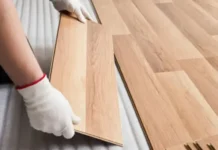When winter comes rolling around, it can do some serious damage to a home. Not only can it damage the home’s roof but its siding, its windows, and just about everything else that the home consists of. As such, it’s often wise to winterize a home.
Curious as to the specifics of a home winter preparation? Then read on. Here are 8 tasks for you to carry out.
-
Trim Your Trees
First and foremost, you need to trim up your trees. Winter causes branches to freeze, and when branches freeze, they tend to snap and fall. This can result in all sorts of destruction.
Falling branches are particularly harmful to a home’s roof. Note, though, that they can also break windows, siding, and concrete.
The key is to trim branches so that they have no legitimate chance of falling on your home. You want to eliminate all overhang and keep those branches’ lengths to an absolute minimum.
Depending on the number of trees in your yard, you might need to bring in a tree care specialist. Believe us: it’s worth it. A little money spent on precautionary measures is much better than a lot of money spent on the repair of a caved-in roof.
-
Start Caulking
Homes deteriorate over time. For whatever reason, they tend to form little gaps. These appear in baseboards, drywall, windows, doors, and otherwise and they all create the same problems.
These problems include reduced insulation, increased insect infestation, and a reduced aesthetic overall. And when winter comes rolling around, they can cause a home to feel downright drafty.
For this reason, before the cold sets in, you need to caulk the gaps in your home. Walk into the different rooms of your home and look for inconsistencies. Then, just take your caulk gun and go to work. It’s really that simple.
-
Insulate Your Windows
Even the best of windows will let cold through. Drafts are exceedingly common in wintertime. Fortunately, there’s something you can do about them.
All you have to do is insulate your windows with insulative plastic wrap. This can be purchased online or in big box stores for around $10. Buy a pack, follow the directions, and apply these wraps to your windows.
You’ll be amazed at how well a thin sheet of plastic can block cold drafts. Your home will take on a cozy feeling, and you’ll save money on heating costs.
-
Inspect the Weather Stripping on Your Doors
Not only do windows become drafty but doors as well. When a door lets a draft through it, it’s usually because its weather stripping is old and worn down.
For this reason, before winter sets in, you should go around to your doors and check their weather stripping. Make sure that it’s still relatively firm and that it hasn’t grown spongy. If it’s spongy, it’s not going to do its job right.
Fortunately, it’s fairly easy to facilitate a weather stripping replacement. Just buy new weather stripping and follow the instructions in the link.
-
Lay Down Rugs
You walk in from a freshly fallen snow . . . only to get water all over the floor. There’s not a lot you can do to stop this. However, there is something you can to mitigate its effects: you can lay down rugs.
Make sure there are fluffy, absorbent rugs in front of every one of your doorways. This way, when you come inside, you can wipe your feet off fully, preventing snow from doing damage to your flooring.
-
Run Your Faucets on a Drip on Ridiculously Cold Days
Water pipes are fairly resilient entities. It takes a lot to burst them. However, there is something that can cause them to burst at a moment’s notice: ridiculously cold weather.
If the weather in your area goes below 5 degrees Fahrenheit, your pipes will be in a bit of danger. Fortunately, there are things you can do to protect them. Primarily, you can keep your faucets on a drip.
Keeping your faucets on a drip prevents the water in your pipes from becoming stagnant. If stagnant water gets too cold, it will freeze, leading to a burst pipe. If moving water gets cold, it will just continue moving, and a burst pipe will be averted.
-
Make Sure Your Furnace Is Ready
A winter without artificial heat would be a brutal experience, even if it only lasted for a few days. You need your furnace to run reliably.
As such, before the cold comes in, you need to have your furnace inspected by a professional HVAC specialist. He or she will identify inconsistencies and make necessary repairs.
-
Clean Out Your Gutters
The last thing you’ll want to do to prepare your home for the winter is to clean out your gutters. See, over time, gutters become filled with all sorts of objects, from leaves to trash to grass clippings and more. Unfortunately, these objects can cause the gutters to clog, leading to a variety of different problems.
For instance, water might get trapped in one area of the gutter, causing it to pool. If it pools, it will freeze, placing undue strain on the bottom portion of the roof.
There’s also a risk of the water pouring over the side of the gutter and falling down next to the home’s foundation. This could cause foundational deterioration over time.
Cleaning your gutters ensures that this doesn’t happen. It allows rain and melted snow to slide straight through your downspouts, limiting damage to your home.
It’s Wise to Winterize a Home
Winter is a rough time. At the end of the day, we just have to get through it. To winterize a home is to protect it from all sorts of damage. So, facilitate these tasks and ensure that your home stays in good shape.
Need other such info? Our website is the place to be. Check out some of our other articles right now!


































































